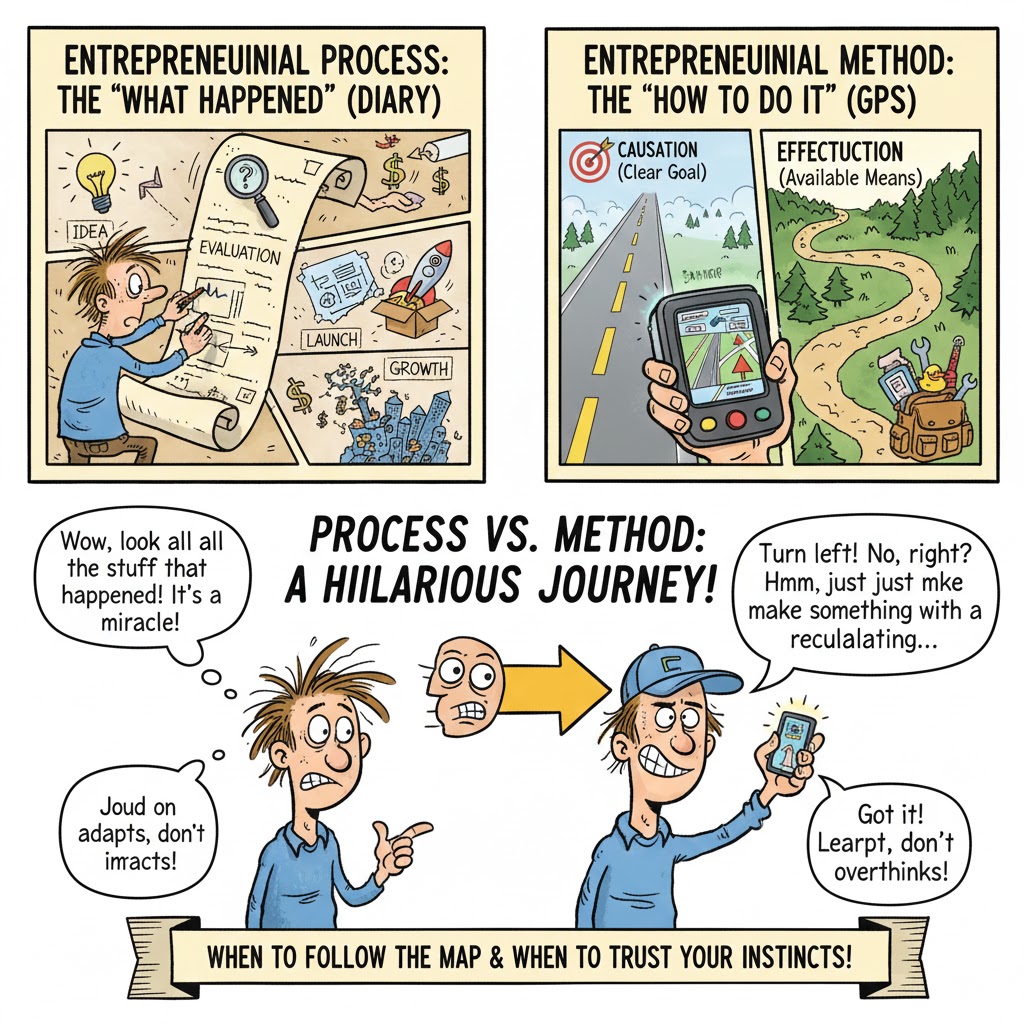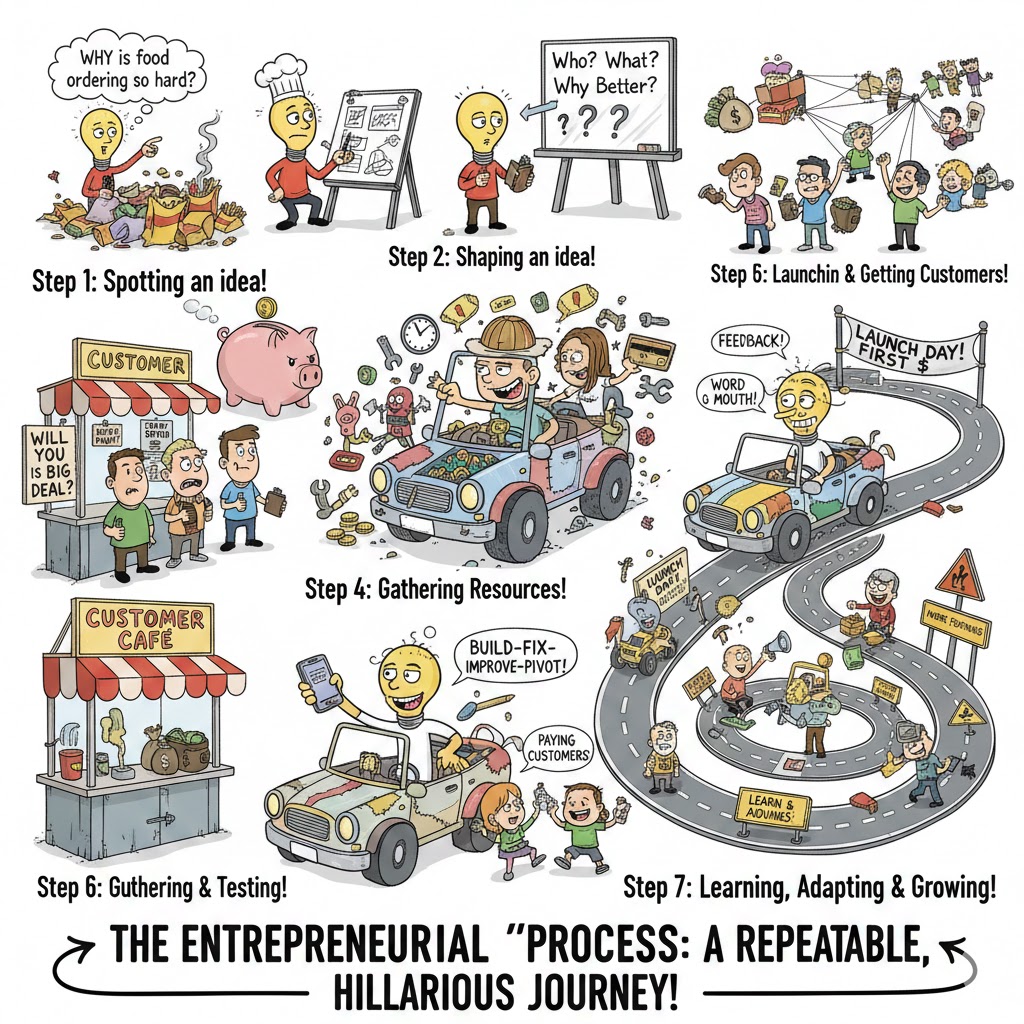
Ever wondered why some entrepreneurs meticulously plan every step while others seem to wing it and still succeed? The answer lies in understanding two fundamental concepts: entrepreneurial process and entrepreneurial method.
The Simple Truth
Think of the entrepreneurial process as a travel diary—it describes the journey an entrepreneur takes from idea to business. The entrepreneurial method, on the other hand, is more like a GPS—it prescribes the best route to reach your destination.
Entrepreneurial Process: The “What Happened”
The entrepreneurial process is descriptive—it tells the story of what actually happens when someone builds a business. Imagine documenting your road trip: first you got the idea, then you checked if it was feasible, next you made plans, gathered resources, launched the business, and finally managed its growth.
This process typically unfolds in five stages: idea generation, opportunity evaluation, planning, company formation and launch, and growth. It’s observation-based, capturing the reality of entrepreneurship as it naturally occurs.
Entrepreneurial Method: The “How You Should Do It”
The entrepreneurial method is prescriptive—it provides specific principles and actionable guidelines for entrepreneurs to follow. It’s the difference between watching someone cook versus following a recipe yourself.
Two popular entrepreneurial methods illustrate this perfectly. Causation is goal-oriented: you decide what dish you want to make, then gather the ingredients. Effectuation is means-oriented: you check what’s in your fridge and create something delicious from what you have.
Why This Matters to You?
Understanding this distinction changes everything. The process helps you understand the journey and what to expect. The method gives you practical tools to make better decisions along the way. Most successful entrepreneurs actually blend both approaches depending on their circumstances.
Quick Comparison
| Aspect | Entrepreneurial Process | Entrepreneurial Method |
|---|---|---|
| Nature | Descriptive (what “is”) | Prescriptive (what “ought” to be) |
| Purpose | Documents stages of venture creation | Provides decision-making guidelines |
| Focus | The journey and stages | The tactics and principles |
| Example | Five stages: idea → evaluation → planning → launch → growth | Effectuation: Start with available means; Causation: Start with clear goal |
| Use | Understanding what happens | Guiding how to act |
| Approach | Observation-based | Action-based |
The beauty of entrepreneurship is that there’s no single right way. Some ventures need careful planning (causation), others thrive on flexibility and resourcefulness (effectuation). The key is knowing when to follow the map and when to trust your instincts.
Credits: The image in the post was generated using Gemini, and the blog was rewritten using Claude Sonnet 4.5
